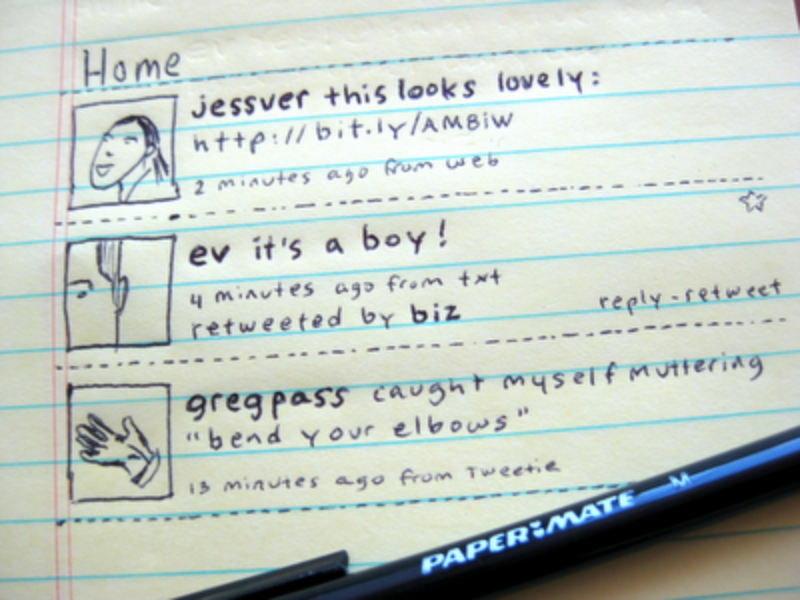10 years ago today, Twitter launched “native retweet” and significantly changed how people experienced the Twitter timeline. IMHO it was a huge and relatively gutsy change. I’m writing this post to explain what changed, and why I like a particularly controversial aspect of it -- strangers in the timeline -- so much. I hope it will encourage others who were at Twitter at the time to share their stories.
First off, imagine the Twitter of early 2009. It was a simpler Twitter in SOOOOO many ways. Timelines were a reverse chronological set of 140 character tweets. There were no ads. No images. And no mobile phone client from Twitter. Barack Obama had just been inaugurated.
| Late 2008 screenshot from Huynh, Terence, Twitter releases new design, more customisable, TechGeek, Sept 20, 2008 |
On August 13, 2009 @biz made a short blog post pre-announcing a new retweet feature so that the Twitter client developers (none of whom worked at the company or were paid by Twitter) would be ready for it when it rolled out on twitter.com. At least one of those developers already had a retweet button that made retweeting easier, but the new feature @biz announced was different. It was simple and revolutionary. Now when I retweeted @BarackObama my followers would see his tweet as if they too were followers of @BarackObama for that instant. They would see his Tweet as if they followed him -- in their regular timeline -- but with an acknowledgement to me, and as if it had been tweeted when I hit the retweet button. As @Biz described it:
"Let’s say you follow @jessverr, @biz (that’s me), and @gregpass but you don’t follow @ev. However, I do follow @ev and the birth of his baby boy was so momentous that I retweeted it to all my followers.
Imagine that my simple sketch is your Twitter timeline. You’d see @ev’s tweet even though you don’t follow him because you follow me and I really wanted you to have the information that I have." Photo and quotation from Stone, Biz, Project Retweet: Phase One, Twitter Blog, Aug. 13, 2009.
It made retweeting much easier,* but it also meant that users saw the faces of people they didn’t follow in their timeline (internally we called this the "strangers in the timeline" phenomenon). Retweets were also displayed based on the time of retweet, not the time of the original tweet (even though the timestamp was still the original one), so it looked like the tweets were being displayed out of order. Here’s what it looked like when it rolled out later that year (with a special dialog box to explain to people why they were seeing strange new avatars).
 |
| Screenshot by See-ming Lee CC-BY-SA |
Anyhow, I’ll leave the rest of the stories about this to others who were closer to the decision and implementation. For now I just want to thank the folks that were there and call them out so that they (hopefully) tell more of the story. My memory is hazy, but I think at least @zhanna, @alissa, @cw, @goldman, @ev, and @biz would have good memories of it. Please share, tell the inside story, and add more folks I missed.
